In the active field of telecommunications, approximately 31% of businesses currently utilize VoIP systems. Specifically, Voice over Internet Protocol (VoIP) phones which serve as essential tools for both small businesses and individual consumers.
This detailed guide aims to clarify the range of VoIP phone choices, enabling enterprises and individual consumers to make informed decisions that match their operational requirements and communication needs precisely.
What are the best VoIP phones?
The following table provides a quick comparison of the Avaya IX J179 IP Phone, Cisco 8841 IP Phone, Snom D785, Mitel 6867i, and Yealink T48S, detailing their display sizes, connectivity options, key features, and ideal use cases.
Phone Model | Display | Connectivity | Features | Best For |
Avaya IX J179 | 3.5-inch color display | Gigabit Ethernet, Wi-Fi (with adapter), Bluetooth | Support for up to 8 lines, customizable button layouts, high-definition audio quality, integration with Avaya platforms | Businesses requiring a versatile phone that can adapt to various communication needs |
Cisco 8841 | 5-inch high-res color display | 2 x Gigabit Ethernet ports | Five programmable lines, superior audio with Wideband audio support, easy integration with Cisco solutions | Enterprises in need of a reliable and scalable communication solution |
Snom D785 | 4.3-inch color LCD | Bluetooth, 2 x Gigabit Ethernet, USB port | Support for 12 SIP accounts, self-labeling keys, built-in Bluetooth for headset, second screen for contact management | Users looking for a high-end phone with extensive features and customization options |
Mitel 6867i | 3.5-inch backlit color LCD | Dual Gigabit Ethernet, USB, EHS/DHSG headset port | Support for up to 9 lines, HD wideband audio, encrypted voice communications for enhanced security | Organizations prioritizing security and high-definition voice clarity |
Yealink T48S | 7-inch color touchscreen | Dual Gigabit Ethernet, Wi-Fi (with WF40 USB Dongle), Bluetooth (with BT40 Bluetooth Dongle) | Support for 16 SIP accounts, Optima HD Voice with Wideband codec, touchscreen interface for customization | Professionals seeking a top-tier phone with a large display and superior sound quality |
Types of VoIP phones
Choosing a VoIP phone might appear a challenging task with so many options available. By organizing the various types, the decision-making process becomes much simpler. Let’s explore:
- Hardware VoIP Phones
- Softphones
- Mobile VoIP Apps
- Video VoIP Phones
Each type has its unique benefits and features, catering to distinct needs within the marketplace.
1/ Hardware VoIP Phones

Hardware VoIP phones resemble traditional telephones but are adapted to handle voice data. These physical devices connect directly to a VoIP network through Ethernet or WiFi, transforming analog voice signals into digital data that is transmitted over the Internet.
They are equipped with advanced features that are not typically found on regular phones, such as caller ID, voicemail, call transfer, touch-screen interfaces, and multiparty calling – these phones are designed for professional settings. They deliver exceptional call quality and reliability, making them ideal for offices requiring multiple phone lines.
Hardware VoIP phones also provide a unified integration into a company’s existing communication infrastructure, combining traditional ease of use with the benefits of modern VoIP technology.
2/ Softphones:
Softphones operate as software applications rather than physical devices. They are adaptable for installation on a range of devices such as PCs, and smart mobile devices, transforming them into communication hubs.
Softphones use the device’s built-in microphone and speakers or can be used with connected headsets, to make and receive voice calls over the internet. This adaptability establishes them as a prime choice for businesses that prioritize mobility and cost-efficiency. Since they require no additional hardware, softphones can significantly reduce overhead costs associated with traditional phone systems.
Additionally, softphones integrate easily with business applications such as CRM systems and offer a range of features similar to hardware VoIP phones – including voice and video calls, voicemail, caller ID, and conference calling enhancing workflow efficiency.
3/ Mobile VoIP Apps
Mobile VoIP Apps include a broad category of applications specifically designed for use on smartphones and tablets, facilitating VoIP calls directly from mobile devices. These apps use the existing internet connection, either through WiFi or mobile data networks, to place and receive calls, thereby avoiding the traditional cellular networks.
This approach not only significantly reduces the cost of mobile communication, especially for international calls and roaming, but it also introduces a new level of flexibility and mobility in communication.
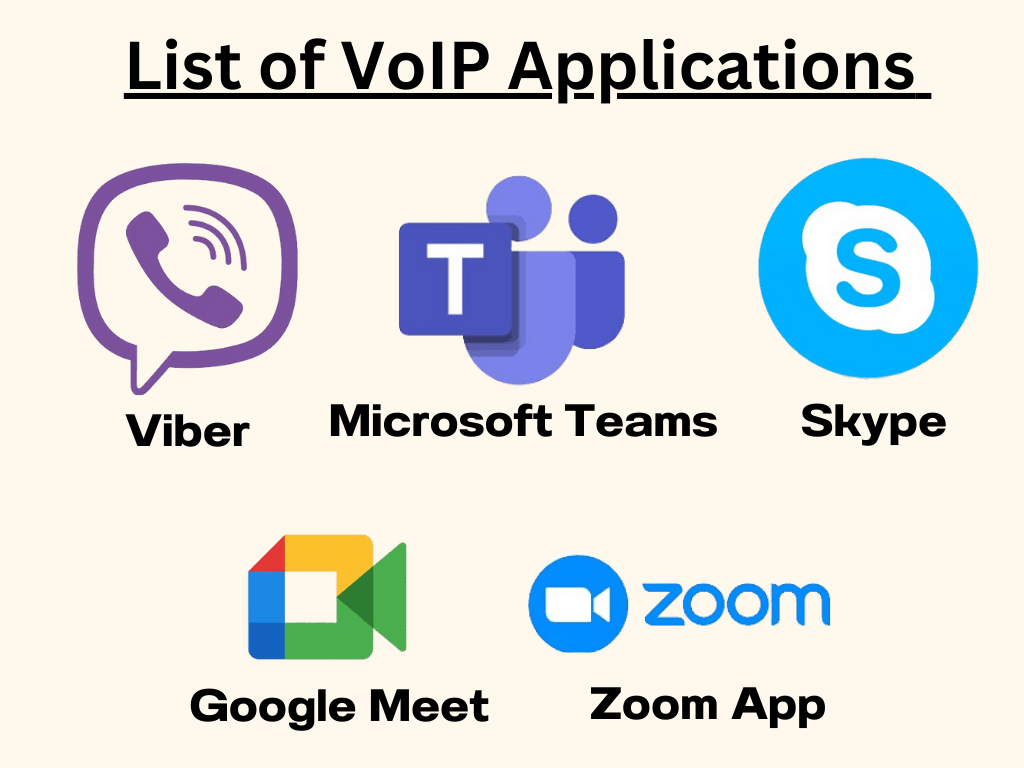
You can download and install VoIP apps like WhatsApp, Skype, or Viber on your mobile devices that offer a wide range of features beyond simple voice calls. These include video calls, text messaging, file sharing, and integration with business applications, providing a unified communication experience that is not tied to a specific location or device.
Related Stats:
Every day, 74% of employees indicate that they utilize VoIP applications on their mobile devices to conduct business calls.
4/ Video VoIP Phones
Video VoIP phones incorporate advanced communication technologies to facilitate both voice and video calls over the Internet. Unlike traditional VoIP devices that only support audio communication, Video VoIP phones enable you to engage in face-to-face interactions, leveraging high-quality video alongside clear audio.
This type of phone system combines the reliability and clarity of VoIP calling with the personal touch of video conferencing, making it an essential tool for businesses looking to enhance collaboration and connectivity.
With Video VoIP phones, your business can conduct virtual meetings, interviews, and discussions with a level of engagement that closely resembles in-person communication.
Best VoIP phones for home use
When it comes to selecting VoIP phones for home use, comfort, ease of setup, and quality are key considerations. Here’s a selected list of top choices that combine functionality with user-friendly features:
1. Polycom VVX 600
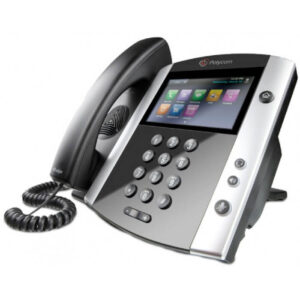
- Display: 4.3-inch LCD (480 x 272)
- Connectivity: Bluetooth, USB, and Ethernet
- Features: HD Voice, video conferencing capabilities through an external camera, a touchscreen interface, and integration with various VoIP services.
- Best For: Those searching for a high-end experience with strong features for both voice and video calls.
2. Yealink W60P
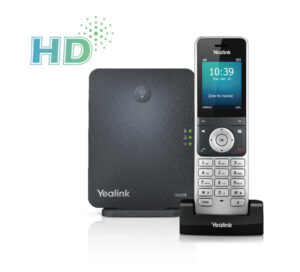
- Display: 2.4-inch color screen
- Connectivity: DECT technology for wireless use, Micro USB
- Features: Supports up to 8 VoIP accounts and 8 simultaneous calls, excellent battery life, and quick charging.
- Best For: Homes needing mobility and the convenience of multiple handset connections.
3. Grandstream DP720
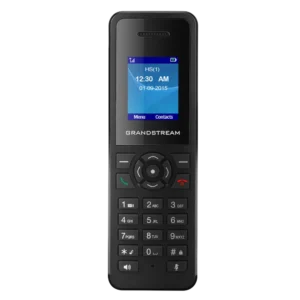
- Display: 1.8-inch (128×160) color TFT LCD
- Connectivity: DECT technology for up to 300 meters outdoors (50 meters indoors) range
- Features: Supports up to 10 SIP accounts per handset, full HD audio, and integrated with a variety of Grandstream’s UCM series IP PBXs for uninterrupted office-to-home connectivity.
- Best For: Users requiring extended range and support for several SIP accounts.
4. Cisco SPA303-G1
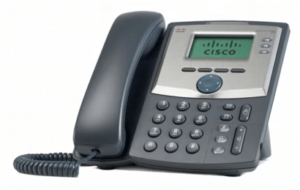
- Display: Monochrome LCD
- Connectivity: Dual Ethernet ports
- Features: Supports up to 3 SIP accounts, simple web-based configuration, and a wide range of supported voice codecs.
- Best For: Those looking for a reliable, budget-friendly option with essential features and easy setup.
5. Ooma Telo
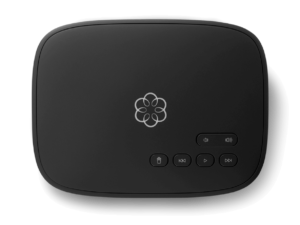
- Connectivity: Wi-Fi, Bluetooth (with adapter)
- Features: Comes with VoIP service offering unlimited domestic calls (subscription required), mobile app for calls on the go, and easy integration with smart home devices.
- Best For: Home users desiring a comprehensive VoIP service and device package with smart features.
Each model offers unique features customized to diverse needs and preferences. Whether it’s for telecommuting, staying connected with your network, or simply enjoying the benefits of VoIP technology, there’s an option well-suited for every home.
What are VoIP phones used for
VoIP phones, using the potential of VoIP, serve diverse purposes in various environments, greatly enhancing communication capabilities. Here are the principal uses of VoIP phones:
1/ Enhancing Your Business Communications: VoIP phones enable you to conduct high-quality audio and video conferences, developing better collaboration and connectivity among your teams, clients, and partners globally.
2/ Telecommuting and Remote Work: They offer remote employees the tools needed to stay connected with their colleagues and clients from anywhere, ensuring that physical distance does not prevent productivity.
3/ Cost Savings on Communication: By using the internet for phone calls, VoIP phones help both you and your business significantly reduce the money spent on traditional telephony services.
4/ Scalability and Flexibility: You can easily scale your communication systems with VoIP technology, adding or removing lines as needed without extensive infrastructure changes.
5/ Integration with Business Applications: Many VoIP phones and systems integrate with business applications such as CRM platforms, enhancing your efficiency and data accessibility.
6/ Personal Use: Beyond the business environment, VoIP phones are also used in homes. They provide you with a cost-effective way to make international calls and offer advanced features like voicemail to email, which are not typically available with traditional landline services.
Related Reading: Is it worth switching to voip
What are the different types of VoIP phone providers?
Broadly, VoIP providers can be categorized into three main types:
1/ Residential VoIP Providers:
Residential VoIP services are designed for home users, offering an affordable alternative to traditional landline phones. These providers typically offer packages with features such as call waiting, voicemail, and caller ID, alongside unlimited domestic calling. Companies like Vonage and Ooma are well-known in this category, providing devices that easily integrate with existing home setups.
Related Reading: Business vs Residential VoIP
2/ Business VoIP Providers:
Focusing on the needs of businesses, these providers deliver a comprehensive suite of services that extend beyond voice calls. Features such as virtual meetings, call routing, automated attendants, and CRM integration are common. Providers like RingCentral and 8×8 cater to businesses of all sizes, offering scalable solutions that support remote work and global teams.
3/ Wholesale VoIP Providers:
Wholesale providers cater to those looking to offer VoIP services under their brand. This is ideal for ISPs, telecom resellers, and large enterprises with specific telecommunication needs. Wholesale VoIP services offer the infrastructure and bandwidth required for deploying voice services, alongside tools for managing billing, customers, and quality of service. Providers such as IDT and VoIP Innovations specialize in this segment, providing private-label VoIP services.
VoIP vs Cell Phone
The following table provides a comparison of some key factors between VoIP phones and cell phones.
Aspect | VoIP Phones | Cell Phones |
Network | Uses internet connection for calls | Uses cellular network for calls |
Hardware | Requires a VoIP phone, softphone app, or computer software | Uses dedicated mobile devices |
Call Quality | Dependent on internet connection quality | Dependent on cellular signal strength |
Mobility | Limited by internet access | Offers greater mobility, can be used almost anywhere |
Features | Wide range of features like video calling, voicemail, call forwarding, and more | Feature-rich, with apps, cameras, GPS, and more |
Battery Life | N/A (for desk phones), relies on device power for softphones | Limited by battery life, needs recharging |
Emergency Calls | Requires correct setup for emergency services | Direct access to emergency services (911) |
International Use | Cost-effective for international calls | International roaming charges may apply |
Business Use | Often used for business VoIP systems | Frequently utilzed for both personal and business operations |
Installation | Easy to set up, usually plug-and-play | Requires SIM card and activation for new devices |
To know more check out our detailed guide on: VoIP phone vs cell phone
Why are there two network ports on VoIP phones
VoIP phones are equipped with two network ports to enhance their functionality and integration within a network environment. This dual-port configuration allows one port to connect to the local area network (LAN), while the other connects directly to a computer or other network device.
This arrangement serves several purposes. Firstly, it simplifies the network infrastructure by reducing the need for additional network switches or ports, especially in environments where desk space is at a premium.
Secondly, it ensures that both the VoIP phone and the computer can access the network through a single LAN connection, facilitating efficient data transfer and communication.
This setup not only optimizes the use of network resources but also minimizes cable clutter, making it a refined solution for both home and office settings.
How to turn your old phone into VoIP
Transforming an old phone into a VoIP device is a cost-effective way to repurpose the technology you already own. Here’s how to get started:
- Check Compatibility: First, ensure that your old phone can connect to the internet, either via Wi-Fi or through an Ethernet adapter. This is crucial, as VoIP services require an internet connection to function.
- Select a VoIP Provider: Choose a VoIP service provider that meets your needs, whether it’s for home or business use. Evaluate aspects like pricing, functionalities, and customer service. Sign up for the service and take note of the credentials provided, as you’ll need them for setup.
- Acquire an Analog Telephone Adapter (ATA): An ATA converts the analog signal from your old phone into digital data that can be sent over the internet. Purchase an ATA that is compatible with your VoIP provider’s service.
- Configure the ATA: Connect the ATA to your internet router and your old phone. Follow the setup instructions provided with your ATA device to configure it using the credentials from your VoIP provider. This typically involves accessing a web interface and entering details such as your VoIP username, password, and server information.
Once configured, make a test call to ensure everything is working correctly. You should be able to place outgoing calls from your previous phone and receive calls with your new VoIP number.
Frequently Asked Questions
Q1) What kind of phone is needed for VoIP?
Ans: For VoIP services, you can use a variety of phone types depending on your setup and preferences. Generally, there are two main options:
- IP Phones: These phones are designed specifically for use with VoIP technology and can directly connect to your internet network, either via Ethernet or Wi-Fi. Equipped with all essential hardware and software, IP phones efficiently manage IP calls.
- Analog Phones: Traditional analog phones can also be used with VoIP services, provided they are connected through an Analog Telephone Adapter (ATA). This device transforms analog signals into digital data, enabling their transmission over the internet.
Q2) Is an IP phone the same as a VoIP phone?
Ans: Yes, an IP phone is a type of VoIP phone, often used interchangeably. However, it’s worth noting that “VoIP phone” broadly refers to any device capable of making voice calls over the internet, including both dedicated IP phones and traditional phones that are connected via an ATA. On the other hand, “IP phone” specifically refers to phones that are designed with the necessary hardware and software to connect directly to an IP-based network for voice communications.
Q3) Can a cell phone be used as a VoIP phone?
Ans: Yes, a cell phone can be used as a VoIP phone. To do this, you will need to download and install a VoIP application provided by your selected VoIP service provider. Upon installation, the application enables your cellphone to place and receive calls via an Internet connection rather than relying on your mobile network.
Q4) Can you have both landline and VoIP?
Ans: Yes, you can have both a landline and VoIP service simultaneously. This dual-service approach can provide a reliable backup communication method, ensuring connectivity even if one system fails or experiences issues.
Q5) Do VoIP phones need a provider?
Ans: Yes, VoIP phones require a provider to facilitate voice-over-Internet Protocol services. These providers offer the necessary infrastructure and services to convert voice calls into digital signals that can be transmitted over the Internet. Choosing the right VoIP provider is crucial, as they are responsible for the reliability, call quality, and range of features available to users. Without a VoIP provider, the technology needed to place and receive calls over the Internet would not be operational.
Q6) What are the three types of VoIP services?
Ans: VoIP services can be grouped into three types, each with unique advantages. Hosted VoIP is managed by an external provider, ideal for small to medium-sized businesses. On-premise VoIP requires businesses to maintain their infrastructure, preferred by larger organizations. Hybrid VoIP combines elements of both (Hosted VoIP and On-premise VoIP), offering flexibility and scalability.

